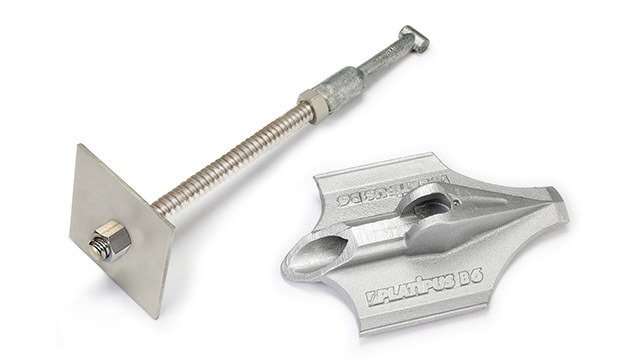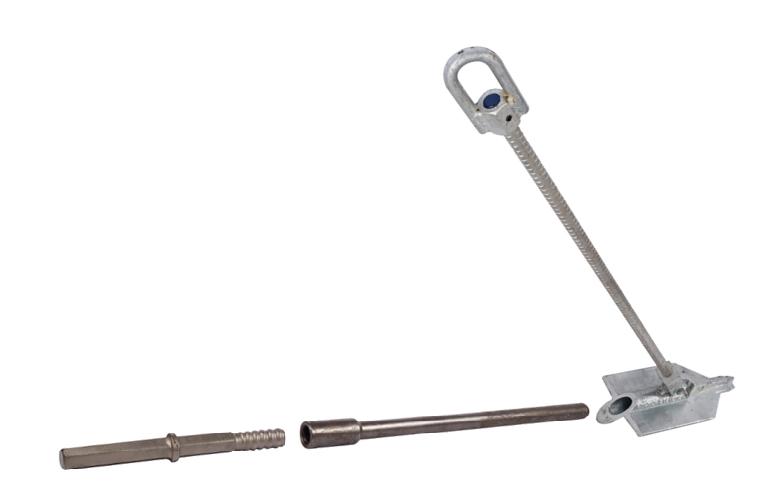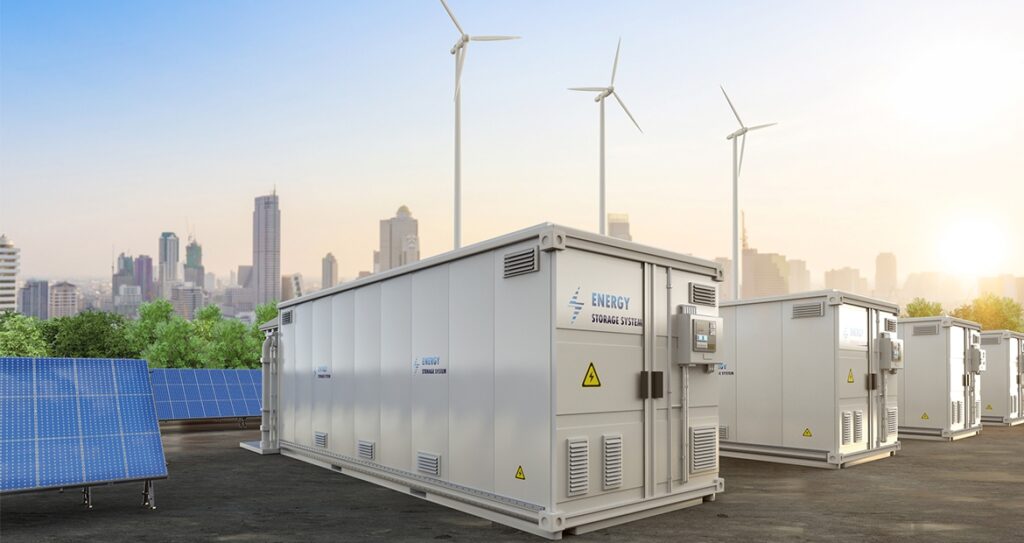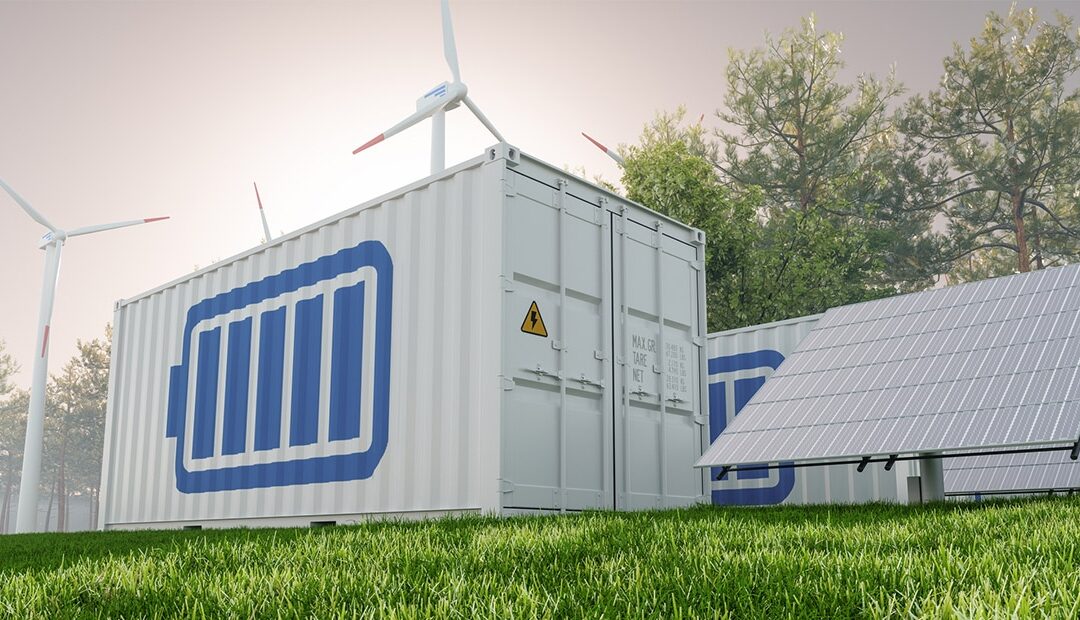- Heavy-duty earth anchors support the adoption battery energy strage systems in South America.
- AI and IoT devices play a crucial role in the develoment of these systems for grid stability.
As South America advances in energy production, battery energy storage systems (BESS) continue to be popular. Battery energy storage systems play a role in enhancing grid stability to address the challenges related to renewable energy integration. This is as the region embraces the shift towards sustainable energy driven by the adoption of wind and solar energy. Wind and solar energy are dependent on weather conditions and may interrupt supply to the national grid. Battery energy storage systems improve grid stability by storing excess energy during periods of high renewable generation. Batteries help smooth out weather fluctuations and ensure a consistent energy supply. Using AI and advanced analytics-based platforms enhances the functionality and efficiency of BESS. Also, heavy-duty earth anchors are crucial in battery energy storage systems. They provide structural stability and safety for installations in large-scale installations.
Heavy-duty earth anchors secure the components of BESS infrastructure to the ground. They also ensure the systems remain stable and operational in various environmental conditions. Heavy-duty earth anchors ensure the extensive infrastructure remains stable in large grid-connected systems. The earth anchors also provide a reliable solution to keep BESS secure in off-grid BESS. They also have designs to keep the structures secured to the ground and withstand high winds and shifting soils. By doing so, heavy-duty earth anchors enable the BESS systems to perform their grid-stabilizing functions without interruption. This article looks at the role of heavy-duty earth anchors in BESS to ensure grid stability and efficiency. It also highlights the need for AI and IoT in battery energy storage systems in South America.
The contribution of AI and IoT devices to battery energy storage systems in South America is noteworthy.
The integration of artificial intelligence (AI) and the Internet of Things (IoT) is important in BESS. These are technologies that address the region’s unique energy challenges. These challenges include renewable energy variability, aging infrastructure, and the need for efficient energy management. Countries like Chile, Brazil, and Argentina are investing in solar and wind power. This would need the use of battery energy storage systems and IoT devices. Heavy-duty earth anchors support the integration of energy storage with solar and wind power. This enhances the efficiency of renewable energy use for grid stability. The following are the contributions of AI and IoT devices in enhancing BESS and supporting grid stability in South America.

- Enhancing renewable energy integration – AI helps improve forecasting of renewable energy generation. This is by analyzing weather data, historical trends, and real-time information. This allows BESS to optimize when to store energy and when to release it. IoT devices collect real-time data on energy production from renewable sources.
- Optimizing BESS operations – BESS management requires continuous monitoring and optimization to maximize efficiency. AI algorithms can determine the ideal times for charging and discharging the battery. IoT devices track the condition of the batteries and other system components in real time.
- Supporting microgrids and electrification—many South American countries lack reliable grid connections. AI manages the balance between local generation and energy storage for microgrids. IoT devices enable communication between components such as solar panels, wind turbines, BESS, and diesel generators.
- Improving energy efficiency – using AI and IoT devices in BESS operations leads to more efficient energy use and cost savings. AI can analyze electricity usage patterns and predict when demand will peak. This helps the systems to reduce the strain on the grid and avoid high electricity costs.
Role of heavy-duty earth anchors in battery energy storage systems
Heavy-duty earth anchors are critical components in the installation and maintenance of battery energy storage systems. The anchors provide structural stability and safety for installations in outdoor applications. These anchors secure the components of the BESS to the ground and ensure they remain stable and operational. They also enable the BESS to perform their grid-stabilizing functions. Heavy-duty earth anchors are also crucial in installing and maintaining large-scale battery energy storage systems. They serve in utility-scale BESS, off-grid BESS, and coastal and windy areas. Heavy-duty earth anchors provide safety, durability, versatility, and cost effectiveness. The following are the functions of heavy-duty earth anchors in battery energy storage systems.

- Structural stability – earth anchors secure the foundations of battery storage units. This prevents shifting or tilting due to environmental forces such as wind, earthquakes, or soil movement.
- Securing enclosures and containers – BESS units have containers to protect the batteries from weather conditions. The anchors ensure the physical safety of the equipment and reduce maintenance needs.
- Cable management – earth anchors serve to secure cables and conduits to ensure they remain in place. This also improves the efficiency and reliability of energy storage operations.
- Mounting solar panels or wind turbines—heavy-duty earth anchors can help to secure the mounting structures of these resources. This supports battery energy storage systems by ensuring a steady supply of renewable energy.
- Protection against flooding – earth anchors help secure the foundations against ground movement. They help to keep the platforms above flood levels and secure them on slopes.
Role of heavy-duty earth anchors and battery storage systems in grid stability
Battery energy storage systems and heavy-duty earth anchors play crucial roles in enhancing grid stability. They help to address challenges such as energy supply and demand and the physical and structural stability of the infrastructure. Heavy-duty earth anchors ensure the physical stability and structural integrity of energy infrastructure. This protects them against environmental forces and physical risks. Here’s how earth anchors and battery energy storage systems complement each other in ensuring grid stability.

- Grid stability – BESS addresses the dynamic and electrical aspects of grid stability, such as balancing energy supply and demand. Heavy duty earth anchors ensure the physical security of the storage systems.
- Resilience during extreme events – BESS can maintain energy supply during outages caused by natural events. Earth anchors protect the physical infrastructure from environmental damage. This enhances the grid’s ability to withstand and recover from extreme events.
- Cost and operational efficiency—the battery energy storage systems optimize energy management and reduce the need for extra power plants. Heavy-duty earth anchors reduce the risks of structural failure, which could lead to costly repairs.
- Supporting modular and mobile BESS—heavy-duty earth anchors provide a reliable anchoring solution. BESS helps to support microgrids, construction sites, or emergency response efforts.
- Voltage support – BESS can provide voltage support and manage reactive power to stabilize the grid. This helps prevent voltage sags and power quality issues, which can disrupt industrial operations and sensitive electronic equipment.
Key drivers for the adoption of BESS in South America
The adoption of battery energy storage systems in South America arises from several factors. These drivers include the need for modernization, the push for renewable energy integration, and the demand for reliable energy solutions. As technology continues to evolve and costs decline, energy storage will play a role in shaping a sustainable, reliable, and flexible energy future. The following are the factors influencing the adoption of BESS in South America.

- Integration of renewable energy – South America has enough solar and wind resources, which contribute to renewable energy development. Countries like Chile, Brazil, and Argentina are their solar and wind power installations.
- Decentralized of the energy system – the development of distributed energy sources such as rooftop solar panels and small wind turbines contributes to the adoption of BESS. BESS enables the effective se of DERs by storing excess generation and releasing it when needed.
- Energy security and resilience—many South American countries are striving to reduce their dependence on fossil fuels. BESS supports the transition to cleaner energy by enabling the increased use of renewables.
- Technological advancements – new battery technologies offer higher energy density and a longer lifespan. The adoption of smart grid technologies and IoT devices supports the use of BESS by enabling energy management.
- Economic drivers – the falling costs of lithium-ion and other battery technologies make BESS more economically viable. Lower costs encourage investment in storage systems for large-scale grid applications.
In summary
As South America advances in energy transformation driven by renewable energy growth and the need for grid modernization. Battery energy storage systems are a key solution for achieving grid stability. The systems also provide frequency regulation, voltage support, peak shaving, and emergency backup power. These capabilities improve grid resilience and reduce reliance on fossil-fuel-based generation. Heavy duty earth anchors ensure the storage systems remain secure and operational regardless of environmental conditions. They allow energy resilience and technological integration to support the region’s sustainable energy goals.

TTF Power supports the adoption of battery energy storage systems by providing utility pole hardware fittings, transmission line accessories, and power line construction equipment. We provide our customers with the most extensive range of products in the industry, excellentvalue, and knowledgeable service. TTF is a world-class global provider of high-quality overhead line hardware, transmission hardware, distribution hardware, conductors, insulators, cutout switches, anchoring, and grounding products. We have an extensive range of products and services that support the installation, construction, and maintenance of battery energy storage systems in South America. Subscribe to our newsletter to receive the latest updates on products and services.


